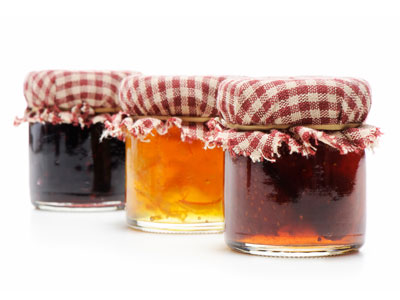How is food packaged?
How does this align with my curriculum?
Take a closer look at food packaging. Explore why and how food is packaged in different ways.
What You Need
- Variety of packaged foods
Safety First!
Fresh meat packages that are not fully sealed may be a biological hazard. Make sure fresh meat packages are placed into clean plastic bags before children handle them. Always wash hands after touching and sorting foods.
What To Do
When grocery shopping and unpacking groceries or when using packaged foods, look at and discuss the types of packaging. What materials are used in packaging? Why do different foods have different packaging material? What is the purpose of packaging?
Discovery
There are many different types of food packaging, such as aluminum cans, plastic jars, glass jars, cardboard boxes, air-filled plastic bags, cartons, plastic tubs, styrofoam trays, etc.
Food packaging can serve two roles: to protect food and to contain food. Many foods can spoil when they come into contact with air. Tin cans and air-tight containers keep air and airborne germs away from foods, which helps protect the food. The tin canister was invented in 1810 and the first tin cans were so thick that hammers had to be used to open them. The can opener was not invented until 48 years later, when the cans became thinner.
Cans and glass containers are often used to contain foods that are runny, like spaghetti sauce, or that are preserved in liquids, like pickles and olives. Air-filled packages such as those for potato chips keep the food from breaking or crumbling while they are being transported and stored.
Create a chart like the one below. Examine the types of packaged food you have in your home and record them on the chart. Fill in the first two columns and then count the number of foods in each type of packaging and add the number to the chart. Which type of packaging do you have the most of? Which type do you have the least of? Are there similarities between the types of food found in the different types of packaging?
| Type of packaging | Type of food | Number |
|---|---|---|
For more information on this topic check out these Let's Talk Science resources:
- The Environmental Impact of Wasted Food (STEM in Context) - One-third of all food produced is wasted. Learn about the environmental consequences of food waste, and what you can do about it.
- Physical and Chemical Changes in the Kitchen (STEM in Context) - Many physical and chemical changes happen when food is prepared. Chemistry never tasted so good!
- Space Food: Feeding Astronauts on the ISS and Beyond (Tomatosphere Backgrounders) - Learn how NASA is feeding today’s astronauts on the International Space Station (ISS) and see how they plan to feed tomorrow’s astronauts on a mission to Mars.
What’s happening?
There are many different types of food packaging, such as aluminum cans, plastic jars, glass jars, cardboard boxes, air-filled plastic bags, cartons, plastic tubs, styrofoam trays, etc.
Why does it matter?
Food packaging can serve two roles: to protect food and to contain food. Many foods can spoil when they come into contact with air. Tin cans and air-tight containers keep air and airborne germs away from foods, which helps protect the food. The tin canister was invented in 1810 and the first tin cans were so thick that hammers had to be used to open them. The can opener was not invented until 48 years later, when the cans became thinner.
Cans and glass containers are often used to contain foods that are runny, like spaghetti sauce, or that are preserved in liquids, like pickles and olives. Air-filled packages such as those for potato chips keep the food from breaking or crumbling while they are being transported and stored.
Investigate further
Create a chart like the one below. Examine the types of packaged food you have in your home and record them on the chart. Fill in the first two columns and then count the number of foods in each type of packaging and add the number to the chart. Which type of packaging do you have the most of? Which type do you have the least of? Are there similarities between the types of food found in the different types of packaging?
| Type of packaging | Type of food | Number |
|---|---|---|
For more information on this topic check out these Let's Talk Science resources:
- The Environmental Impact of Wasted Food (STEM in Context) - One-third of all food produced is wasted. Learn about the environmental consequences of food waste, and what you can do about it.
- Physical and Chemical Changes in the Kitchen (STEM in Context) - Many physical and chemical changes happen when food is prepared. Chemistry never tasted so good!
- Space Food: Feeding Astronauts on the ISS and Beyond (Tomatosphere Backgrounders) - Learn how NASA is feeding today’s astronauts on the International Space Station (ISS) and see how they plan to feed tomorrow’s astronauts on a mission to Mars.
